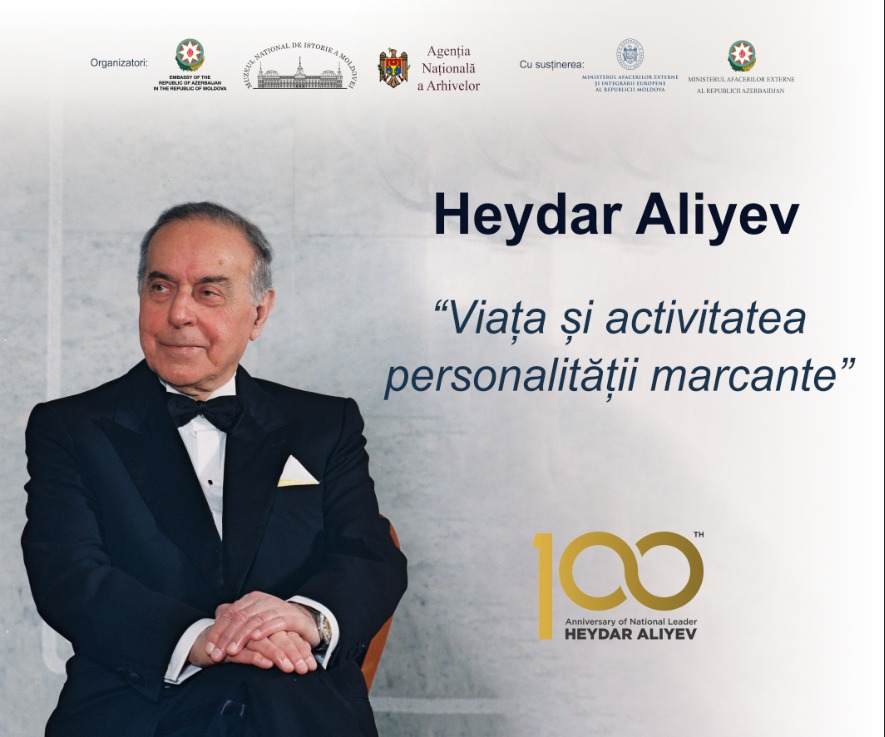 There are leaders who go down in history and stay there. And there are leaders who create national history. Heydar Aliyev became the leader who created the modern history of Azerbaijan. History remembers him as a true legend of his time, a powerful head of state and a devoted and unique figure capable of taking on the difficult historical task of state building.
There are leaders who go down in history and stay there. And there are leaders who create national history. Heydar Aliyev became the leader who created the modern history of Azerbaijan. History remembers him as a true legend of his time, a powerful head of state and a devoted and unique figure capable of taking on the difficult historical task of state building.
This year, Azerbaijan celebrates 100 years since the birth of the Leader of the All Nation of Azerbaijan - Heydar Aliyev. The great Heydar Aliyev was an outstanding statesman and world-class politician.
The 35-year history of Azerbaijan, covering the period from the late 1960s to the beginning of the 21st century, is directly linked to the name of Heydar Aliyev. His political flair and invaluable human qualities enabled the young state to stand up and successfully enter the 21st century as an independent country.
Since his appointment as the leader of Soviet Azerbaijan in July 1969, Heydar Aliyev began the process of significant transformation of Azerbaijan. Under his watch, Azerbaijan achieved great success in the economy and became a leader on the scale of the entire Union. During these years, the industrial potential of Azerbaijan has increased more than twice.
In 1982, Heydar Aliyev was appointed the first deputy chairman of the Council of Ministers of the USSR. For the first time, the representative of Azerbaijan became one of the leaders of the Soviet Union. In October 1987, Heydar Aliyev resigned from office in protest at the political course followed by the Politburo of the CPSU Central Committee. In connection with the tragedy of January 20, 1990, when a large contingent of troops entered Baku by force and massacred many people, Heydar Aliyev was the first to demand the punishment of the organizers and executors of the crime committed against the Azerbaijani people.
After his return to Azerbaijan in July 1990, Heydar Aliyev lived in Baku and then in Nakhchivan, where he was elected chairman of the Supreme Assembly of the Nakhchivan Autonomous Republic. As a result of an extreme government crisis in May-June 1993, Azerbaijan was on the verge of civil war and the loss of independence. The Azerbaijani people demanded that Heydar Aliyev be brought to power in the country, for which he was elected president of the Supreme Soviet of Azerbaijan, and on October 3, 1993, he became the president of independent Azerbaijan and was re-elected to this position in 1998.
With the return of Heydar Aliyev to the leadership of Azerbaijan in 1993, a deep transformation began in the political, social, economic, scientific and cultural life of the country, as well as in the foreign affairs of Azerbaijan and the development of an independent state in accordance with international norms and principles.
As the architect of Azerbaijan's new energy strategy, the Leader of the Whole Nation of the Azerbaijani People, Heydar Aliyev, was the author of some crucial political decisions in the 1990s, which were of great importance in shaping the country's energy policy and demonstrated, at the same time , the willingness of the Republic to contribute to Europe's energy security. Therefore, on September 20, 1994, the "contract of the century" was signed, which went down in history as one of the biggest and most significant events of the 20th century.
During his 10-year presidency, Heydar Aliyev undertook radical reforms in Azerbaijan and transformed the ruins of the nearly devastated country into a viable state. Heydar Aliyev's multi-vector policy became the state strategy that brought prosperity and stability to the country. Under the leadership of Heydar Aliyev, Azerbaijan's foreign policy, as well as its relations with the world's main states and international organizations, began to develop a course based on national interests and a visionary political perspective.
Thanks to the active diplomacy of Heydar Aliyev, Azerbaijan managed to achieve a dramatic change in the attitude of democratic states and important public organizations of the world towards our country and towards the armed conflict, in which Azerbaijan was involved against its will. The fundamental elements of Heydar Aliyev's foreign policy were peace, respect for international law, the territorial integrity of states and the inviolability of their borders, the principles of mutually beneficial cooperation and the elimination of any restrictions that hinder relations between states.
Being an outstanding politician and statesman, the undisputed leader of the nation, he was a living legend, and therefore Heydar Aliyev, as a phenomenon, always attracted attention. The name of Heydar Aliyev will always live in the hearts of people and future generations. Heydar Aliyev's personality and charisma attracted many of the great intellectuals of our time.
Being an outstanding politician and statesman, the undisputed leader of the nation, he was a living legend, and therefore Heydar Aliyev, as a phenomenon, always attracted attention. The name of Heydar Aliyev will always live in the hearts of people and future generations. Heydar Aliyev's personality and charisma attracted many of the great intellectuals of the time.
The exhibition is organized by the Embassy of the Republic of Azerbaijan, the National Museum of History of Moldova, the National Archives Agency, with the support of the Ministry of Foreign Affairs and European Integration of the Republic of Moldova and the Ministry of Foreign Affairs of the Republic of Azerbaijan and can be visited between April 6-20 2023, in the hall on the ground floor of the National Museum of History of Moldova, str. 31 August 1989, 121A.



























































